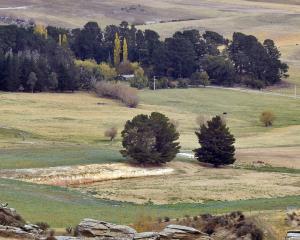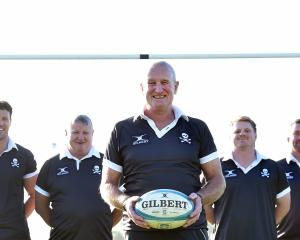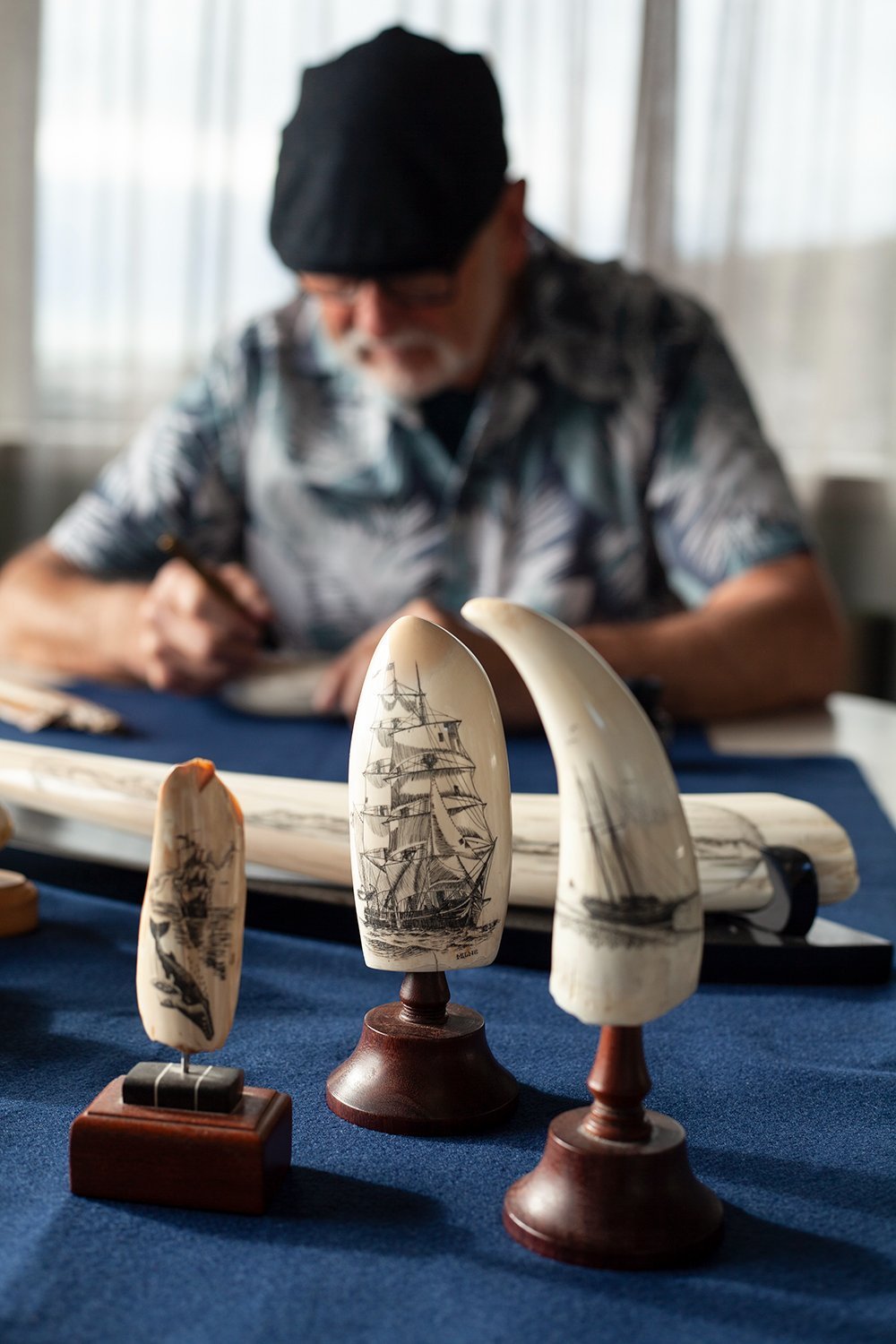
Making thousands and thousands of tiny dots on to ivory or bone with a needle is "just endless".
Armed with his "optivisors", a needle or pin clamped in a pin vice and a LED light, Gus Milne finds the stippling needed to create his mostly maritime and early settler images to be the most painstaking part of his beloved hobby of scrimshanding.
"With that I can get the stippled effect that you get in photographs. That’s the very time-consuming part."
Despite this part of the process, Milne loves nothing more than spending hours in his spare room studio at Mt Pleasant overlooking the ocean, "scratching" as he calls it.
It is a hobby he first came across when living in the United States 40 years ago for a year. While his wife worked as a nurse, he looked after their children.
"A friend ... was wearing a piece just as a necklace, and I was sort of intrigued with it, and I realised after a while he collected."
After talking to him about it, Milne realised he would never be able to afford to buy a piece so he thought he could "have a crack at it" himself.
He had already become involved in ship modelling, creating model ships in light bulbs and bottles, winning several awards in multi-state competitions.
Researching scrimshaw, he discovered it was an art believed to be first practised by whalers off the northeastern states of the US in the 1800s.
It evolved as a way for whalers to while away the time at sea as they waited to sight whales.
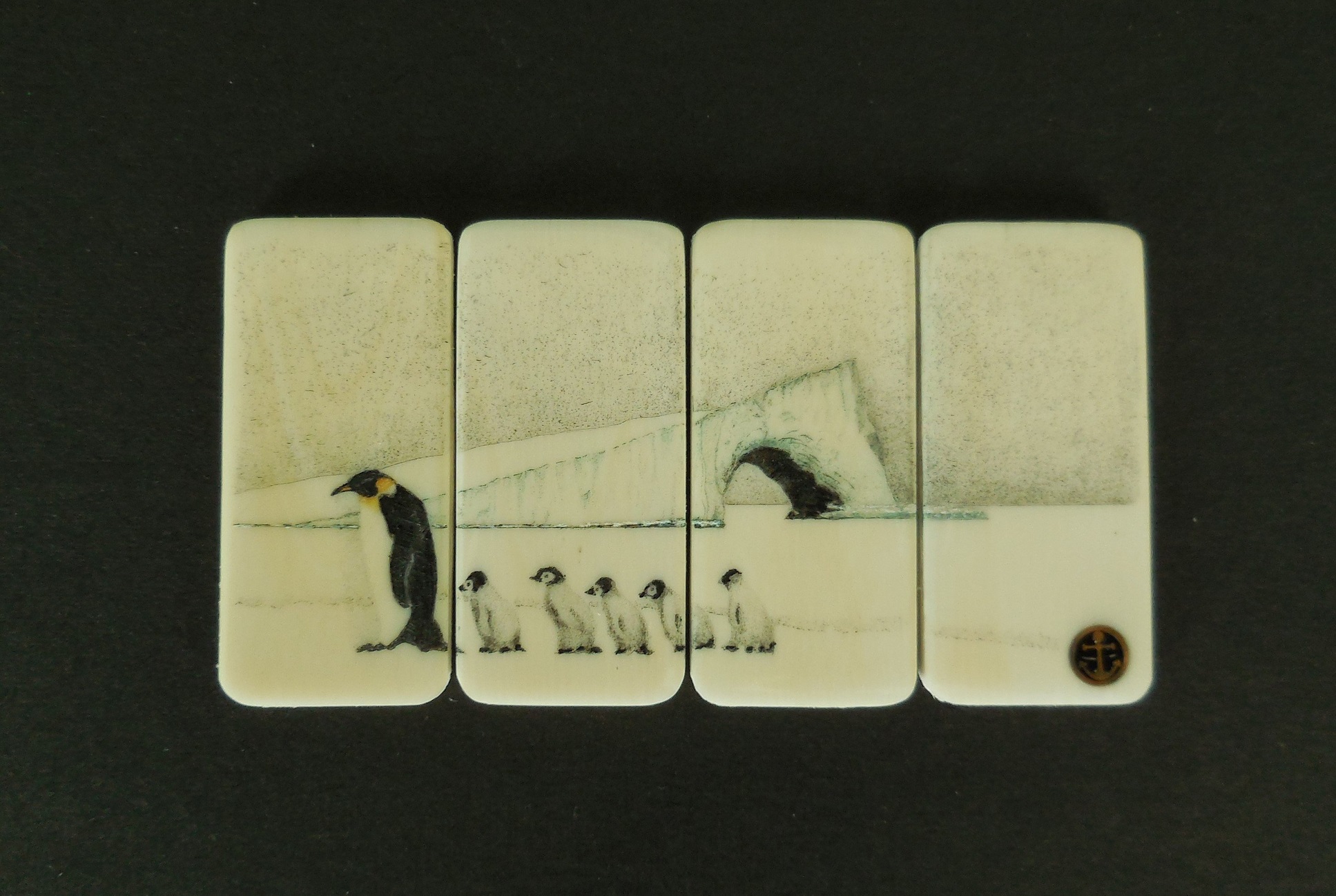
"Whale’s teeth is ivory, so it’s a much cleaner product to work with, I suppose."
While it originated in a practice not agreed with today — whaling stopped in New Zealand in 1964 and in the US in 1930 — the art has continued, using more sustainable products or historic pieces, mostly due to the CITES agreement preventing international trade of animal specimens such as ivory which might threaten their survival.
Scrimshaw was a long-forgotten art form until a revival in the US in the 1960s, when president John F. Kennedy began collecting pieces.
A Christmas gift from his wife of a sperm whale tooth engraved with an image of the seal of the president of the US was buried with him at Arlington National Cemetery in 1963.
Milne started out scrimshanding on beef bone, but discovered it to be quite hard to work with as it absorbed the ink.
So after about 10 years, he moved to using ivory.
"I thought I should have done it years ago. With ivory, you can scratch on it all day and ink it and it doesn’t spread. It just comes back nice and clean."
He looked to do some training in etching but could not find anyone who taught it, so essentially taught himself by reading books on the subject, "picking other people’s brains" and "having a go at it".
It requires little in the way of tools other than a needle, an X-acto tool (like a scalpel) and an oil stone to sharpen both tools. He sharpens them about every 20 minutes as they have to be sharp to do the work.
After 90 minutes of work he takes a break, giving his hand and eyes a rest, returning two, maybe three times in a day.
These days, quality inks are available from art stores, which he rubs on to the piece with a small brush and then rubs off, revealing the image he has engraved. The ink remains in the indentations he has created.

"Antarctic scenes really lend themselves to scrimshaw, with basically the ivory-coloured background."
In the early days, he scrimshanded on historic whale teeth discovered in auctions and second hand shops, but he rarely does that any more.
"I’ve got some, but I don’t scrimshandle them. I use recycled ivory piano keys. That’s my main thing. It’s a nice way of recycling something that would otherwise end up in the landfill."
Ivory-keyed pianos are now more than 100 years old as they stopped using ivory for pianos in the 1920s and 1930s. The majority are past their "use-by date", many going to landfill as no-one wants to buy them because they are too expensive to fix.
Milne bought about five pianos for their ivory, but found that while they might be $1 to buy, they cost $300 to get home.
Then luckily, he found a man building furniture out of old pianos.
"He makes a lovely job and he uses every single thing on the piano except the keys. So now we have this arrangement. I dare say we’ll run out of old pianos and piano ivory in the next 20 years."
Milne, who is a retired government worker, loves the idea of recycling the material and also that each key has been played millions of times.
Many people have an attachment to their pianos, so he has scrimshanded keys as a memento for them.
"Some of them are so worn you can see through them."
At first he scrimshanded single keys, but in recent years has "cottoned on" to doing images across multiple keys, usually in triptych form.
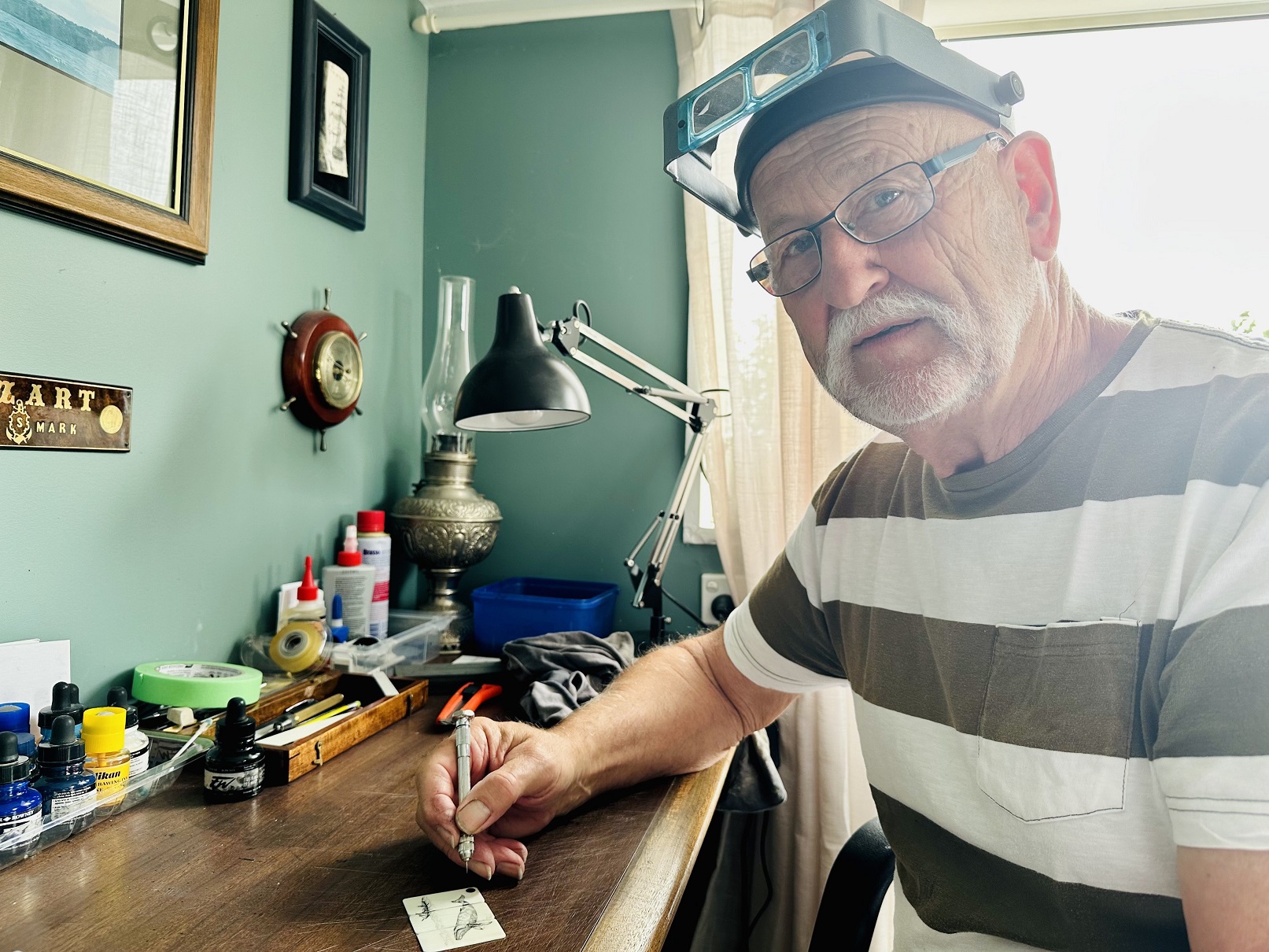
He also occasionally includes the ebony keys in the design.
A recent piece he did as a fundraiser for musician Rakuto Kurano featured the Endurance just before it sank in the Antarctic.
"With this particular one being musically orientated, I thought I’d better throw in some black keys."
No matter how pristine the keys may look, they need preparing to ensure the surface is like glass. That requires sanding each key with different grades of sandpaper until he gets to 2000 grit. He then polishes them.
"You think the keys look nice, but they’ve always got little scratches on them and you’ve got to bring it back to glass really, a glass sort of finish. Otherwise the ink will just show on every slightest mark."
Winning the Aspiring Art prize of $20,000 for his piece Sperm Whale Hunt left him speechless, mostly because scrimshaw is a very unrecognised art form in New Zealand, although quite well-known in the US where it is still used to decorate firearms and knives.
"I guess it’s because it’s new to a lot of people [here], it’s a bit different from your landscapes and your still life stuff. And people probably associate it with the Antiques Roadshow programme where they’ve seen whales teeth of Scrimshaw fetch £50,000. Mine’s not in that league, by the way."
Prize judges Sarah Brown and Chloe Cull said in the tiny scenes Milne captured big stories and histories.
"He is an incredibly well-researched artist, with a deep interest in the global history of his craft that he uses to explore aspects of Aotearoa New Zealand’s history within. He reflects on the long-term impact on the environment of the materials he uses, and is careful to reuse materials and work sustainability."
As far as Milne is aware, he is the only scrimshander in New Zealand at present.
Milne also does some scrimshanding on mammoth ivory he brought into the country years ago. It is able to be used as the animal is extinct and the ivory buried for centuries.
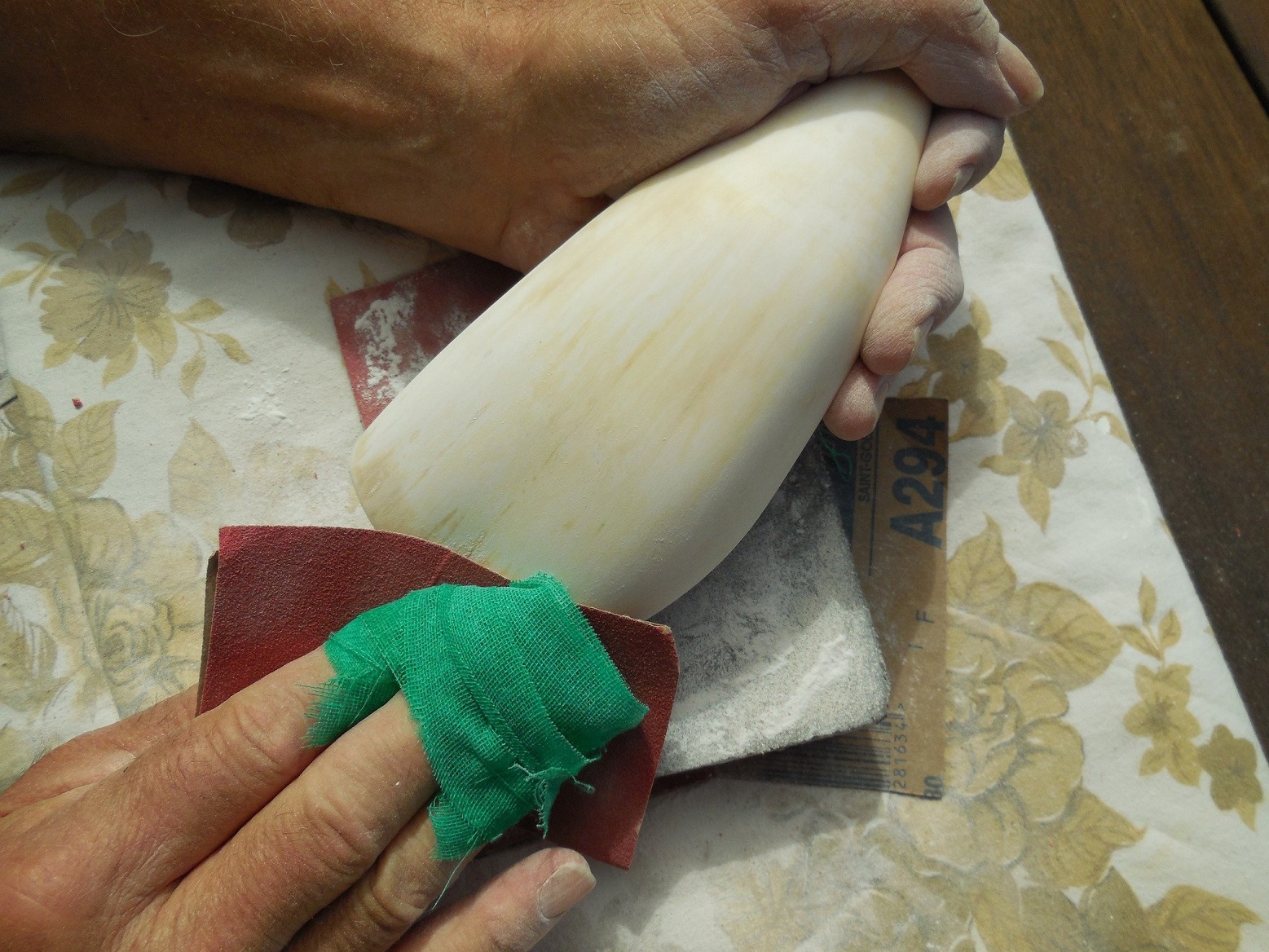
When not scrimshanding, Milne likes to play a wide range of music including classical, describing himself as a "finger picker".
"These days I just do open mic nights for a bit of fun once a week."
OTHER RESULTS
Aspiring Art Show:
Runner-up, Craig Myles Colliers Prize — $3000, Anne Baldock The Stakeholders
Best landscape artist — Peak Accommodation Prize — $2500, Sean Beldon Remarkables
Best work under $1000 — $1000, Lisa Banks Leaving Takaka
Best small work — $500, Lee-Ann Toyokawa No progress for Oliver
Merit award — $500, Katie Robinson — Tulip Season
TO SEE
"Chapter Five", Rakuto Kurano and friends, Mt Aspiring Village January 28, Te Atimira, Queenstown, January 29 and Coronation Hall, Bannockburn, January 30.



